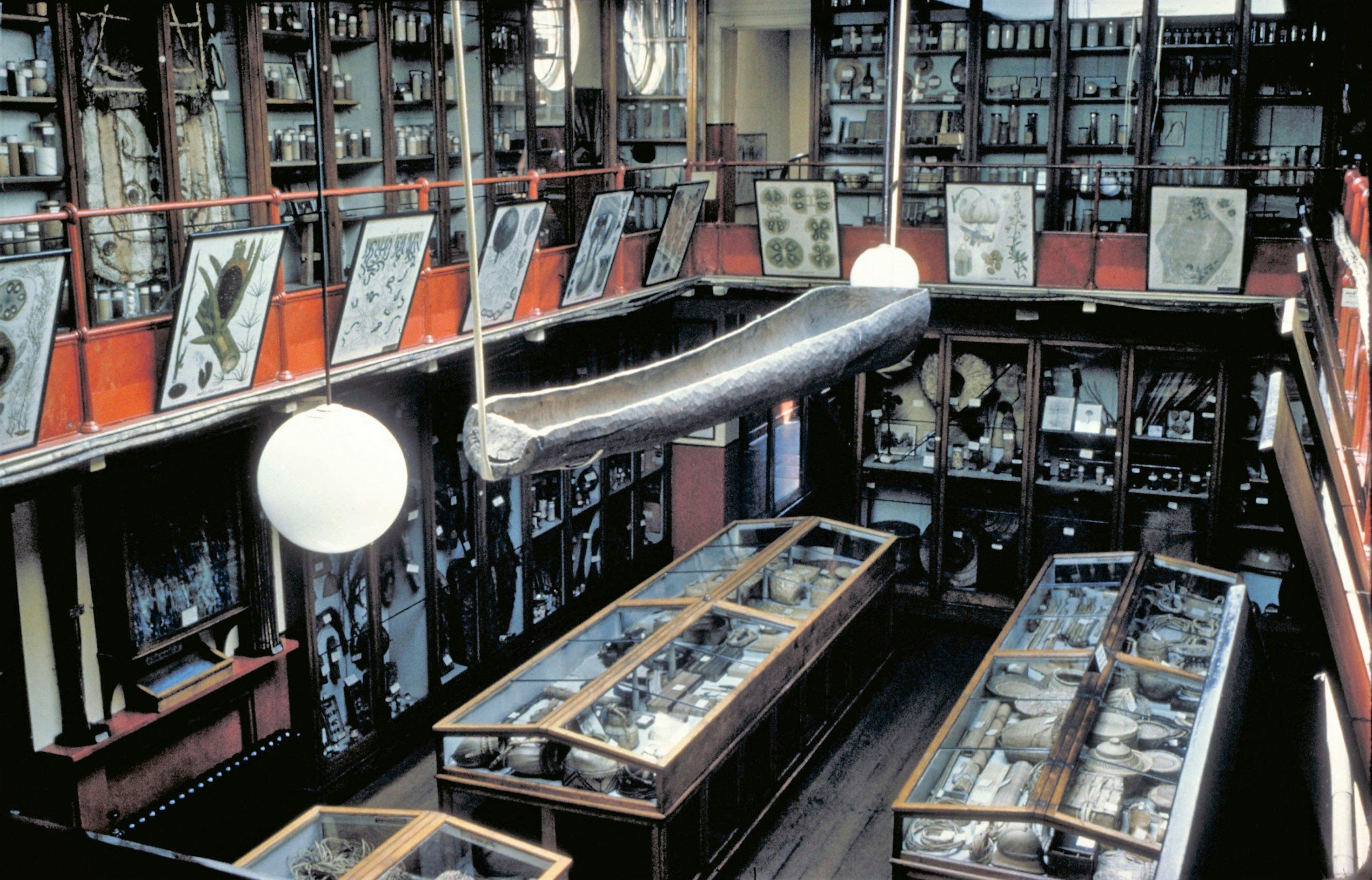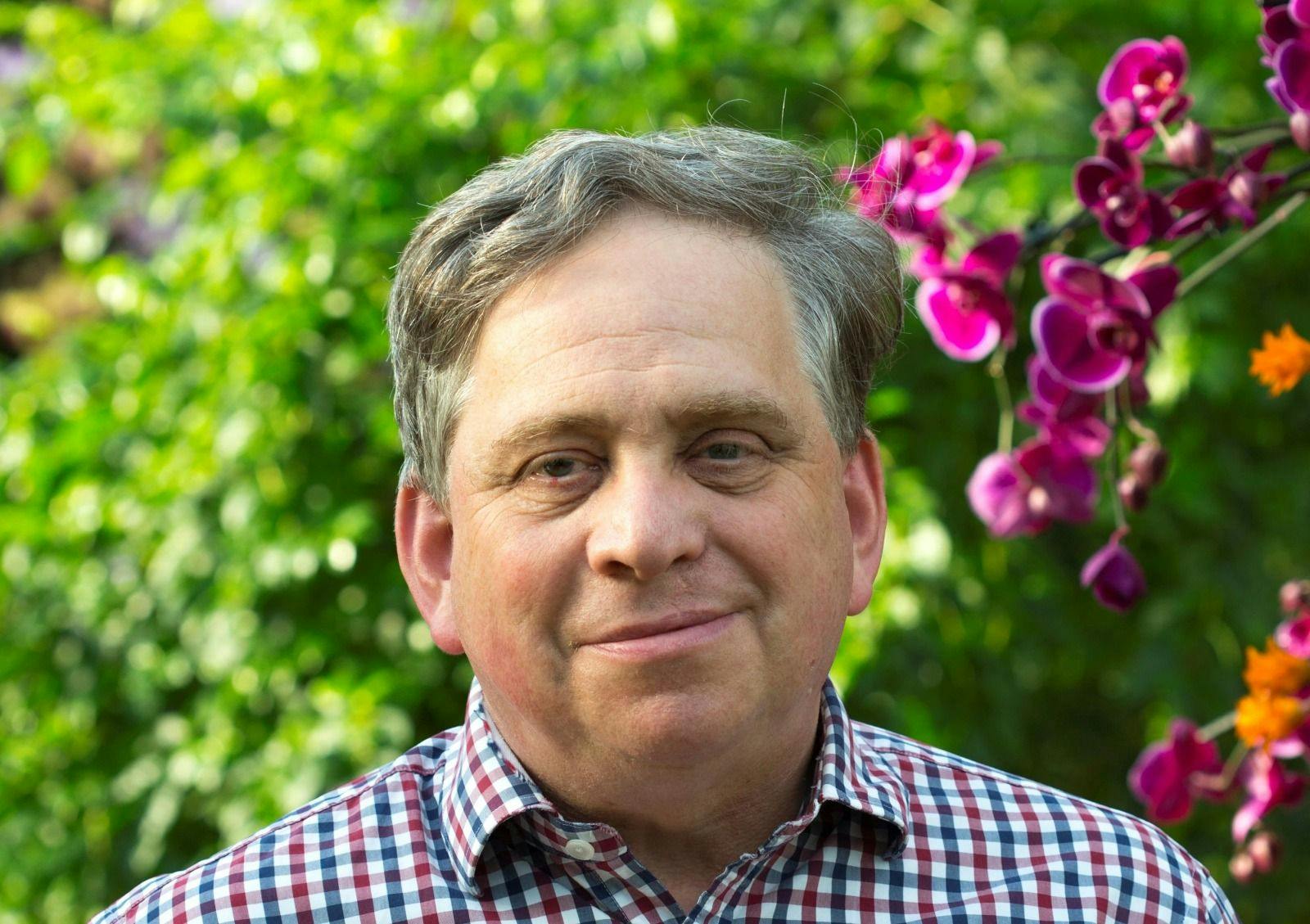As the curator of Kew's Economic Botany Collection, I long ago learnt that my first duty with visitors is to explain the meaning of ‘economic botany’—and why Kew has such a collection. The answers to both questions lie in the mid-nineteenth century, when the term ‘economic’, used in conjunction with the names of scientific disciplines like geology, zoology or botany, referred to their practical, material, commercial or utilitarian aspects. In this context, ‘economic botany’ describes the knowledge of plants that are economically useful or can be commercially exploited. Caroline Cornish's research has shown that William Hooker, the first Director of Kew in its modern incarnation, well understood that government funding for the work of the Royal Botanic Gardens would be increased if it aligned with the nation's strategic interest in assuring reliable supplies of plant raw materials for food, medicine and other purposes (Cornish 2015, 2017). It is thus no surprise that Kew's Museum of Economic Botany was the first of Kew's science collections to be founded, in 1847 (fig. 1). In the following 60, years the museum had an active role as an interface between the world's producers of raw materials, and manufacturing industries in Britain. At the same time, it was also a popular attraction, with contents both ‘useful and curious’ to entertain and educate visitors at a time when Kew was attracting over two million visitors a year.
In the twentieth century, Kew's museum, which had grown to fill four buildings by 1910, became a problem rather than a resource, as reflected in sharply declining acquisitions of specimens after the First World War (1914-18), and the steady closure of museum buildings from the 1950s onwards. The report of the 1958 Visiting Group to Kew, chaired by Sir Eric Ashby, was damning: ‘the museums have been starved of money and choked with worthless bric-a-brac unloaded upon them by State dignitaries, Government officials, and travellers’. In the late 1980s, the museum's collections were moved to a purpose-built store in the Sir Joseph Banks Building and renamed the Economic Botany Collection. Since 2005, when I became its curator, the collection has grown by a quarter, now numbering 100,000 objects. Today, it is fully catalogued and housed to modern standards. At the same time, however, its curatorial team is small in number, and the collection has little visibility to visitors to Kew Gardens.
Kew's museum directly inspired many similar displays in the UK and overseas, and these have generally not fared so well. From the 1950s onwards they appeared increasingly outdated, especially in the era of oil and synthetic products. As a consequence, many museum collections were destroyed (Edinburgh, St. Louis); some were split up between ethnographic and natural history collections (Glasgow, Manchester, Stockholm); while others were mothballed (Hamburg, Harvard, Meise). Only a few of these museums still have extensive public displays today: these include those at the Adelaide Botanic Garden, Warrington Museum, and the Indian Museum, Kolkata.
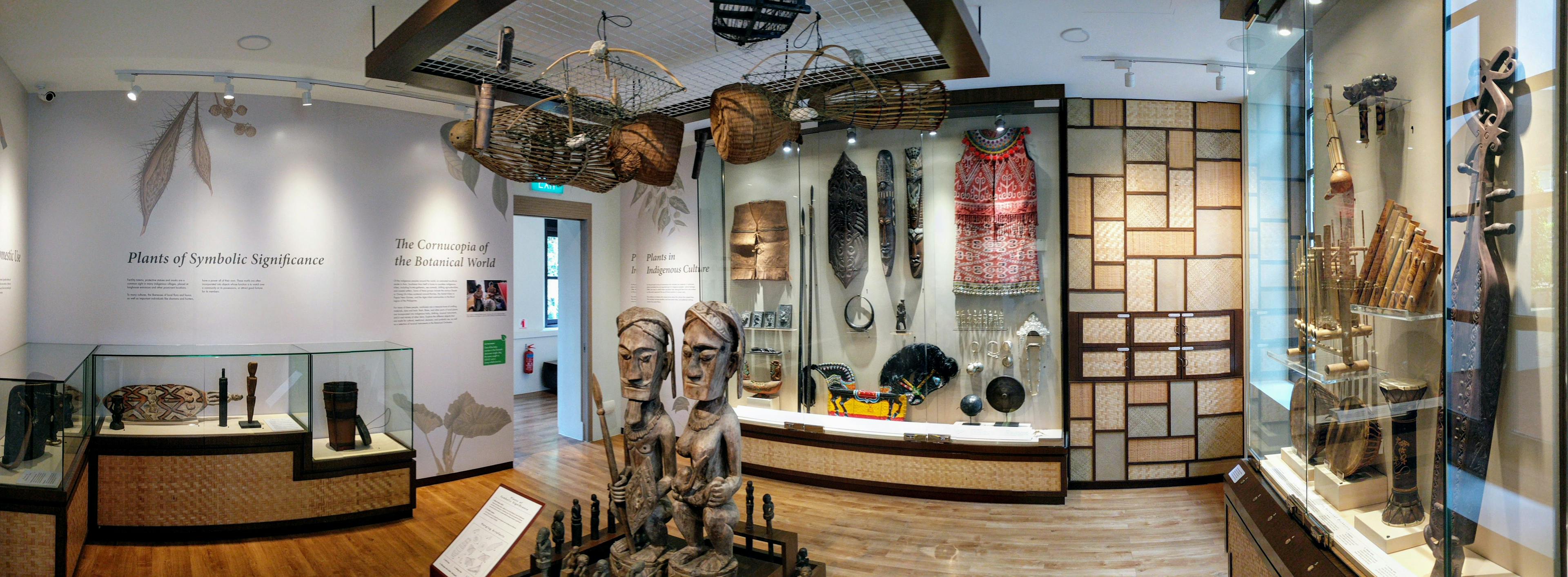
Today the terms used to describe these collections have proliferated: sometimes they are now known as ‘ethnobotanical’ (as in Singapore) or more generally as ‘biocultural’, reflecting their combination of specimens and artefacts. Such changes in terminology reflect both a cultural shift in the study of plant-people relations, emphasising the human element as much as the plants, and a desire to distance research today from the extractive model of nineteenth-century economic botany.
The three decades since the Rio Earth Summit in June 1992 have seen a revival of interest in economic botany collections. I don't think this is a coincidence: aside from being the origins of the Convention on Biological Diversity (CBD), the Earth Summit did much to raise public awareness of the importance of natural resources in sustainable living—now made even more urgent by climate change. Old collections are being dusted off, new ones are being formed, and new museums are opening, as at Singapore (fig. 2) and the Missouri Botanical Garden.
The revival of interest in such collections was also reflected in the publication of Curating Biocultural Collections (2014), a comprehensive handbook that covered the formation, curation and uses of these valuable resources (Salick, Konchar and Nesbitt, 2014). In the years that have passed since the publication of this book, I have come to realise that however we choose to describe these collections, we need a better understanding of the ethos underlying their modern uses. In this respect, I recently found some useful clues in a conversation with Nezka Pfeifer, curator of the Stephen and Peter Sachs Museum at Missouri Botanical Garden, about her interdisciplinary exhibition programme. Nezka also alerted me to a thought-provoking paper by Henriette Pleiger on the development of a 2017 exhibition in Bonn, Germany, Weather Report—About Weather Culture and Climate Science. Henriette's analysis of the working relations between three curators -- herself, a weather scientist, and an arts curator—distinguishes between concepts of multidisciplinarity, interdisciplinarity and transdisciplinarity (drawing from Klein 2010), asking what each contributed to the exhibition.
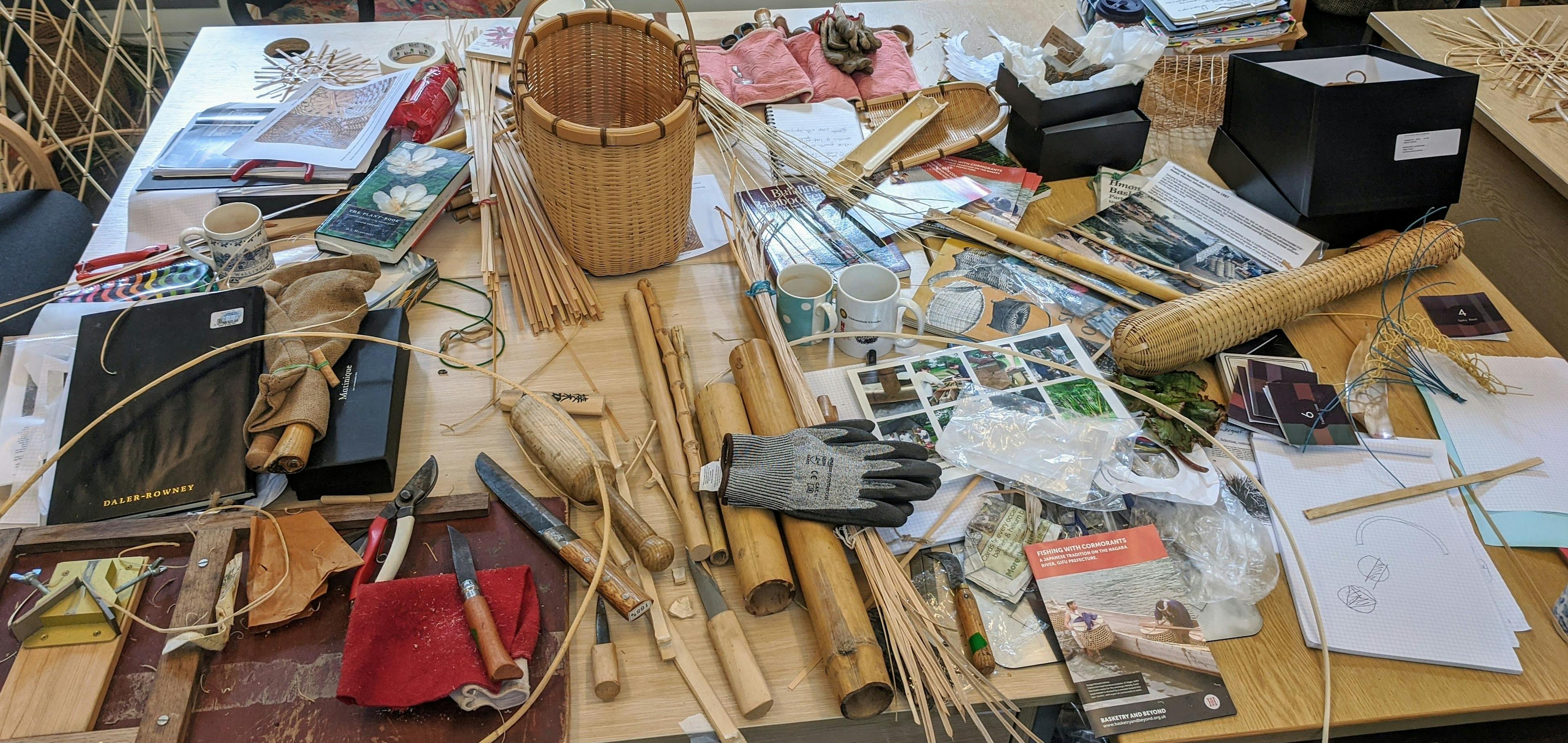
There are strong echoes of this approach to different forms of cross-disciplinary working in the development of our research in Kew's Economic Botany Collection over the last 15 years. Rather than being the outcome of a conscious strategy, these ways of working have emerged organically from collaboration with researchers external to Kew. This has arisen in part from purely practical needs: the Economic Botany Collection has always been staffed by a team of one or two, with a delicate balance between time spent on curation and research. It also reflects the fact that the skills needed to best ‘read’ economic botany specimens are not found in any one person. They include expertise in botany, history, Indigenous knowledge, anthropology, geography, English literature and language, music, art and design, conservation, and so on.
Reflecting on Henriette's experience in Bonn, the three forms of cross-disciplinarity each have their place. Multidisciplinary approaches, for example, arise when Kew is an unfunded partner in a larger research project, limiting the staff time available for interaction. As in the case of our engagement with the Heritage Futures project (2015-19), bringing together varied researchers can result in valuable and thought-provoking experiences for all involved (Harrison and Penrose, 2020), but there is often insufficient time to engage in the kinds of sustained conversations that lead to a common language.
Interdisciplinary research, by contrast, is a more interactive process. There are two reasons why such an approach is particularly suited to work with biocultural collections. The first is connected to their nature as plant-based collections: such materials demand familiarity with object-based research techniques, with botanical names and with the diverse uses of plants. Curators with specialist botanical knowledge thus play an important role in guiding researchers through these collections. The second reason arises from the combination of raw materials and artefacts so typical of such collections. As Caroline Cornish and I have argued, economic botany collections transcend the disciplinary boundaries between different kinds of museums that started to become entrenched in the late nineteenth century (Nesbitt and Cornish, 2018). Because the boundary between nature and culture, or plants and humans, is far less easily discerned in, say, a lump of rubber, specimens in the collection are best ‘read’ within an interdisciplinary context. And as Henriette Pleiger (2020) notes in the case of the 2017 climate exhibition mentioned above, ‘it was when we discussed objects, the stories behind them, and possible connections between them, that we had our best moments of creativity and playfulness within the curatorial team’.
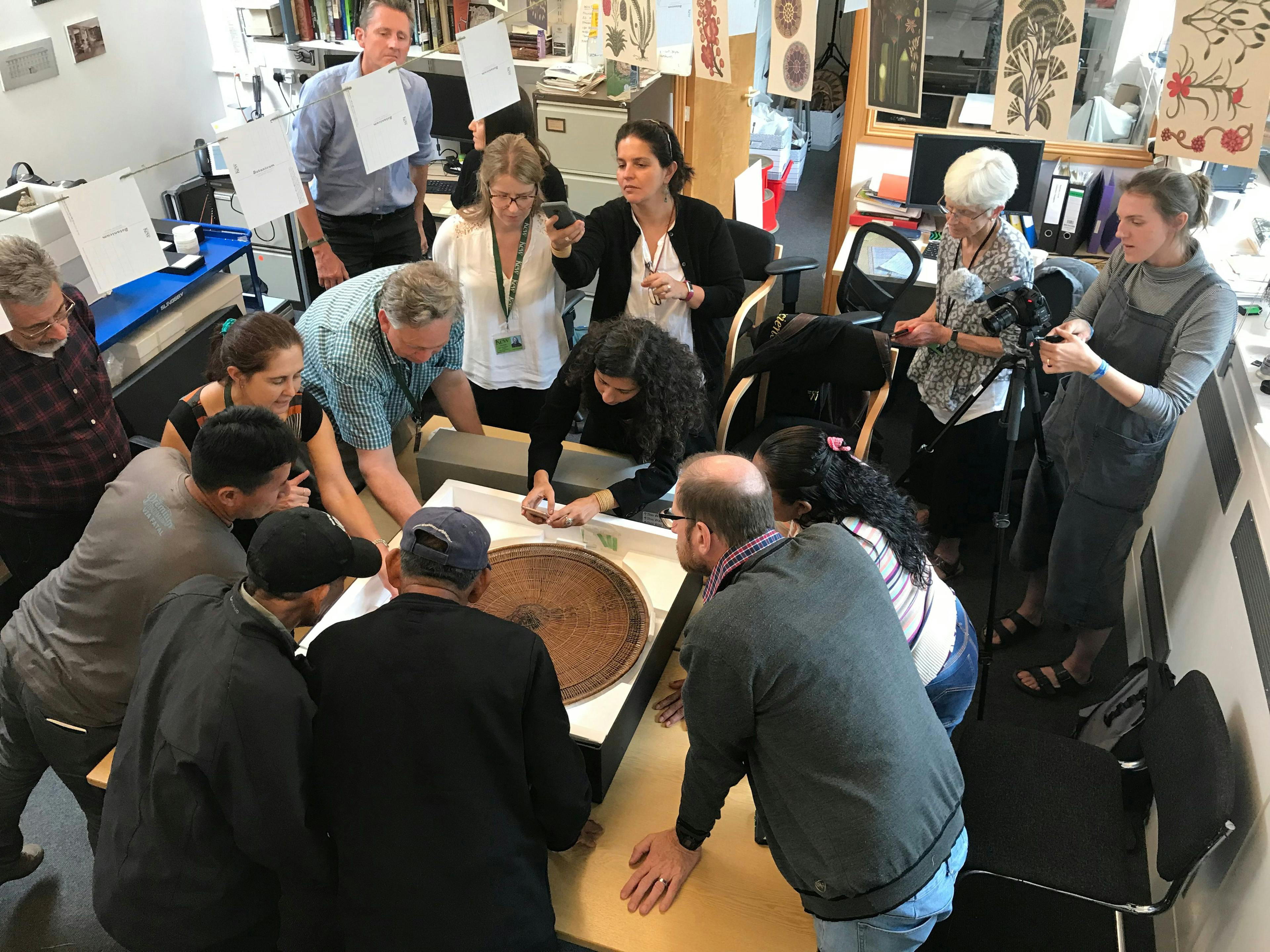
Why is this important? Botanical institutes—whether gardens or museums—are increasingly recognised by activists and researchers as key locations in which to address pressing questions on human-environment relations, both past and present. These include (in a very incomplete list): the past impacts of botany (and restitution for these); co-stewardship of museum collections and data with source communities; the development of a more holistic view of nature-based solutions that take full account of intangible benefits to humans; and how we can best advocate for plants to our audiences. Interdisciplinary work has already shown how biocultural collections at Kew, Leiden and elsewhere can be repurposed to serve source communities and can shine a light on the hidden histories of colonial botany (van Andel, 2017; Driver et al, 2021; Lennard and Mills, 2020).
In 2021, for the first time, interdisciplinary research grounded in the arts, humanities and social sciences has become a core component of the Kew Science Strategy 2021—2025. This reflects our experience at Kew that a biocultural collection is an ideal seedbed for interdisciplinary approaches—and that this is a methodology now widely recognised by colleagues as appropriate to much of Kew's research and public engagement. The third of Klein's modes of researching across disciplines—transdisciplinarity—speaks to projects which aspire to an overarching disciplinary synthesis. We look forward to addressing this challenge through renewed work with existing and new partners. It is perhaps projects co-designed with Indigenous people (fig. 4) that offer the greatest potential in challenging the framework of existing disciplines, leading to transdisciplinary work that truly sustains biocultural heritage.
References
- Cornish, Caroline (2015) Nineteenth-century Museums and the Shaping of Disciplines: Potentialities and Limitations at Kew's Museum of Economic Botany. Museum History Journal 35: 8–27.
- Cornish, Caroline (2017) Botany Behind Glass: The Vegetable Kingdom on Display at Kew's Museum of Economic Botany. Science Museums in Transition: Cultures of Display in Nineteenth-Century Britain and America, edited by C. Berkowitz and B. Lightman. Pittsburgh, PA: University of Pittsburgh Press, pp. 188–214.
- Driver, Felix, Mark Nesbitt, and Caroline Cornish (eds.) (2021) Mobile Museums: Collections in Circulation. London: UCL Press.
- Harrison, Rodney and Sefryn Penrose (2020) Collections as Techniques of Worlding: Second Cross-Theme Knowledge-Exchange Workshop, 28 February–2 March 2017, Royal Botanic Gardens, Kew, UK. In Heritage Futures: Comparative Approaches to Natural and Cultural Heritage Practices, edited by R. Harrison, S. Penrose, C. DeSilvey, C. Holtorf, C., S. Macdonald, N. Bartolini, E. Breithoff, H. Fredheim, A. Lyons, S. May, J. Morgan, A. Högberg, and G. Wollentz. London: UCL Press, pp. 251–260.
- Klein, Julie Thompson (2010) A Taxonomy of Interdisciplinarity. In The Oxford Handbook of Interdisciplinarity, edited by R. Frodeman, J. Thompson Klein, and C. Mitcham. Oxford: Oxford University Press, pp. 15–30.
- Lennard, Frances and Andy Mills (eds.) (2020) Material Approaches to Polynesian Barkcloth: Cloth, Collections, Communities. Leiden: Sidestone Press.
- Martins, Luciana (2020) Plant Artefacts Then and Now: Reconnecting Biocultural Collections in Amazonia. In Mobile Museums: Collections in Circulation, edited by F. Driver, M. Nesbitt. and C. Cornish. London: UCL Press, pp. 21–43.
- Nesbitt, Mark and Caroline Cornish (2016) Seeds of Industry and Empire: Economic Botany Collections between Nature and Culture. Journal of Museum Ethnography 29: 53–70.
- Pleiger Henriette (2020) The Inter-Disciplined Exhibition: A Case Study. Museum and Society 18(4): 349–67.
- Salick, Jan, Katie Konchar, and Mark Nesbitt (2014) Curating Biocultural Collections: A Handbook. Kew: Royal Botanic Gardens, Kew.
- Van Andel, Tinde (2017) Open the Treasure Room and Decolonize the Museum. Inaugural lecture, Leiden University.
